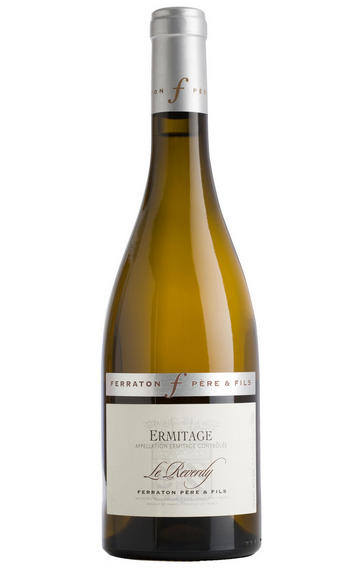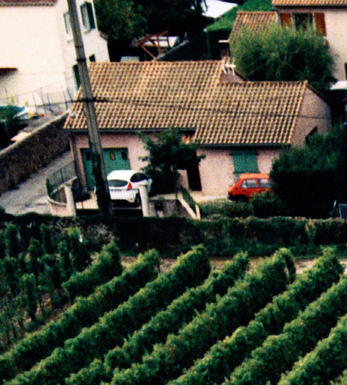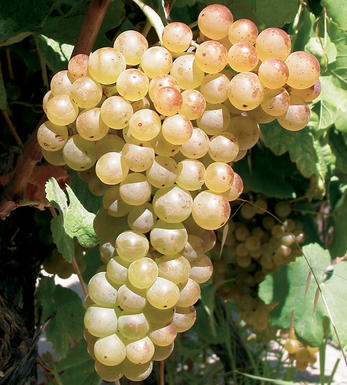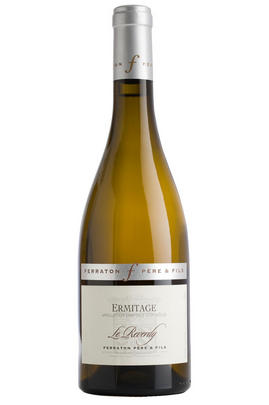
Critics reviews
Jeb Dunnuck - Wine Advocate - Issue#222 Dec 2015
About this WINE

Maison Ferraton
Maison Ferraton is a very fine Northern Rhône wine estate that was run for many years by Michel Ferraton. It is now run by Samuel Ferraton, the fourth generation of the family, who worked for a while in conjunction with Chapoutier frères. The firm has vineyard holdings in Hermitage and Crozes-Hermitage and its wine cellars are located immediately behind those of Marc Sorrel in the heart of Tain l`Hermitage.
Samuel Ferraton is very much an artisan winemaker- yet he employs many modern techniques that he picked up while working with the Chapoutiers.
Consequently, the wines are a marvellous marriage of the old and the new, displaying good structure and well-defined fruit characters, allied with very judicious and limited use of new oak. The wines are bottled unfined and unfiltered.

Hermitage
Hermitage is the most famous of all the northern Rhône appellations. The hill of Hermitage is situated above the town of Tain and overlooks the town of Tournon, just across the river. Hermitage has 120 hectares and produces tiny quantities of very long-lived reds.
The vines were grown in Roman times, although local folklore claims their origins to be nearly 600 years earlier. The name ‘Hermitage’ first appeared in the 16th century, derived from a legend of the 13th century Crusade, involving a wounded knight called Gaspard de Stérimberg, who made refuge on the hill, planted vines and became a hermit.
During the 17th century, Hermitage was recognised as one of the finest in Europe. In 1775, Château Lafite was blended with Hermitage and was one of the greatest wines of its day. In the late 19th century, however, Phylloxera wiped out all the vineyards.
The wines are powerful, with a deep colour and firm tannins, developing into some of the finest examples in France, with the potential to age for many decades. The best Hermitage is produced from several climats or more, blended together. The main climats are Les Bessards, Le Meal, L’Hermite, Les Greffieux and Les Diognieres. Most of the finest climats face broadly south, giving maximum sunshine. Most growers only have one or two climats and they might not complement each other; Hermitage quality can therefore vary hugely. Only the top producers have extensive diversified holdings.
80% of the wine produced is red, however up to 15% of white grapes can be used in the blend. Most growers use 100% Syrah and utilise the white grapes to make white wines only. Chapoutier, Jaboulet and Tain l'Hermitage are the principal proprietors of the appellation’s vineyards.
The white wines are made from the Marsanne and Roussanne grapes. Great white Hermitage can age, taking on the fruit characters of apricots and peaches, often giving a very nutty finish. The best examples in great vintages can last 50 years.
Mature red Hermitage can be confused with old Bordeaux. In a blind tasting of 1961 First Growth Clarets, the famous 1961 Hermitage La Chapelle was included. Most people, including its owner, Gerard Jaboulet, mistook it for Château Margaux.

Marsanne
Marsanne is the predominant white grape variety grown in the Northern Rhône where it is used to produce white St. Joseph, Crozes-Hermitage, and Hermitage. It is a tricky grape to cultivate, being susceptible to diseases and being particularly sensitive to extreme climatic changes - if growing conditions are too cool, then it fails to ripen fully and produces thin, insipid wines, while, if too hot, the resultant wines are blowsy, overblown and out of balance.
In the Northern Rhône it tends to be blended with around 15% Rousanne and produces richly aromatic, nutty wines which age marvellously - the best examples are from Hermitage and particularly from Chapoutier. Increasingly it is being grown in the Southern Rhône and Languedoc Roussillon where it is bottled as a single varietal or blended with Roussanne, Viognier, and sometimes Chardonnay. It is also grown very successfully in Victoria in Australia where some of the world`s oldest Marsanne vines are to be found.



Buying options
Add to wishlist
Description
Honours are shared here between the Marsanne and the Roussanne, not forgetting the winemaker Damien Brisset, who has got it just about right with the oak. The nose is spicy and recalls poached pear, Mirabel plum and hints of toast. The Marsanne lends support to the palate, gently oily but far from oleaginous and softly spicy. Flamboyance courtesy of the Roussanne adds rondeur and a whisper of exoticism; Gauguin in the afternoon.
Drink now to 2020.
Simon Field MW, Wine Buyer
The 2014 vintage left the blocks with great speed, energised by a rainy winter which had topped up water reserves, and then by a dry and exceptionally mild spring. The pace calmed down thereafter, and thoughts of precocity eventually gave way to a relatively late harvest. Challenges were imposed by a mid-season which was by turns rainy and unseasonably cool, with rot a far from negligible danger and the somewhat unusual prospect of September being the warmest month of the year.
Not quite an Indian Summer, in point of fact, but warm enough to ensure timely ripening and a dry harvest. The whites have poise and finely etched fruit and the reds are balanced and approachable. Winemaker Damien Brisset, whilst acknowledging the challenges of the vintage, is more than pleased with the results. Careful to avoid over-extraction, he has allowed each commune and each lieu-dit to impose its personality on its wines and the results are impressive indeed.
wine at a glance
Delivery and quality guarantee